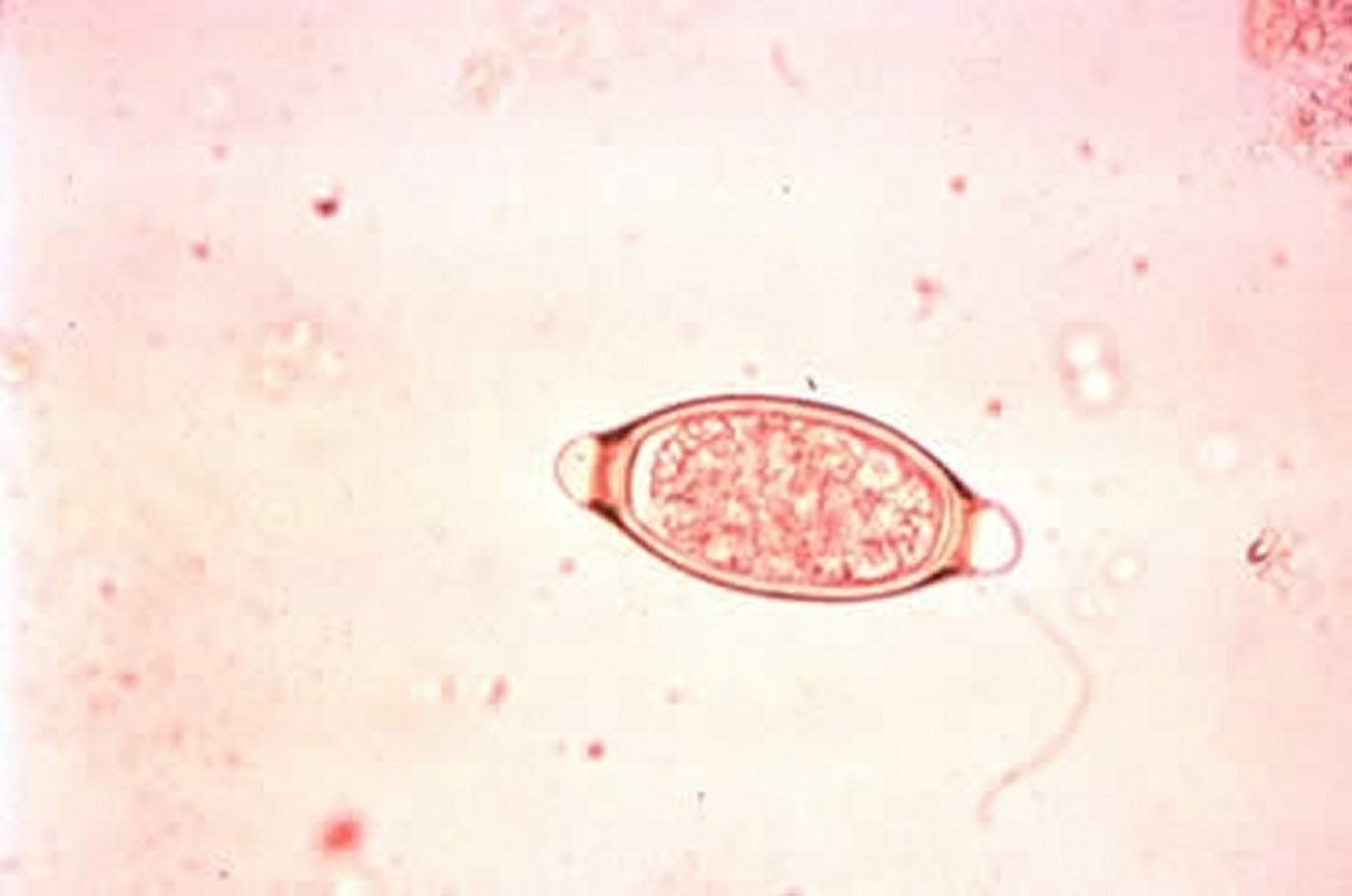Courtesy of Dr. Bruce Lawhorn.
Trichuris suis (whipworm) is found in pigs worldwide. The adult worms are 5–6 cm long and whip-shaped; the cranial slender portion embeds within the epithelial cells of the large intestine, especially the cecum, with the thickened caudal third lying free in the lumen. Infection is by ingestion of eggs containing an infective first-stage larva. The larva hatches and penetrates the distal ileum, cecal, and colonic mucosa. The nematodes complete all four molts, after which the caudal end begins to protrude into the lumen. The prepatent period is 6–8 weeks; longevity is 4–5 months. Infection is generally light, with no clinical signs. Heavy infections may cause inflammatory lesions in the cecum and adjacent large intestine and may be accompanied by diarrhea and unthriftiness.
Clinical signs most often occur in young animals; resistance is both acquired and age-related. The double-operculated brown eggs (50–68 × 21–31 mcm) are diagnostic. Eggs are heavy; thus, good technique with media of proper specific gravity is essential.
Trichurids have a short period of egg-laying (2–5 weeks) before the worms are expelled by immune-mediated reactions, and thus little importance can be given to percentage of pigs excreting eggs or number of eggs per gram of feces. Clinical trichuriasis is usually associated with the larval stages before eggs are passed in the feces; in these cases, examining mucosal scrapings taken at postmortem examination for smaller stages of the parasite is recommended. Mature parasites are easily found after ingesta is washed away and can be identified by their size and whiplike form.
Careful evaluation of product labels is important as not all anthelmintics have good activity against T suis. Dichlorvos, some benzimidazoles, and ivermectin are effective against the adult worms. Biologically, the eggs are comparable to Ascaris eggs—they are highly resistant to chemicals and may remain infective for up to 11 years; control relies on thorough cleaning of the affected area and moving the animals to clean plots. Tillage of pastures between uses can decrease the number of eggs that survive. Trichuris eggs develop rather slowly (10–12 weeks under optimal conditions), and because they do not develop at temperatures < 16°C, there is only one generation per year in temperate geographic areas.
Trichuris suis larvae may hatch in the large intestine of humans, in which the larvae seem to be able to establish themselves transiently. It is this feature that has led to intense research interest in the treatment of inflammatory bowel disease, including ulcerative colitis and Crohn's disease, of humans via administration of infective T suis eggs.




